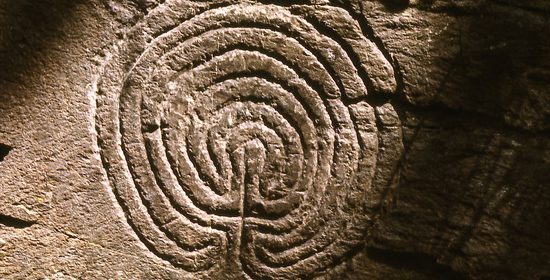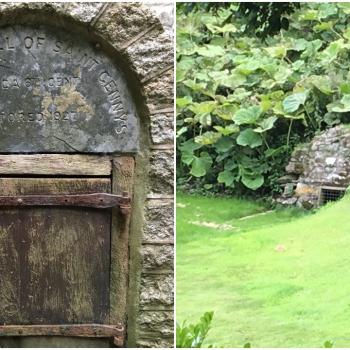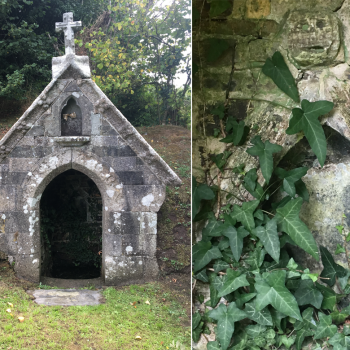
When I was a very young child, my Dad took us all on a holiday to Tintagel in Cornwall, one of Britain’s biggest Pagan hotspots due to its associations with the legends of King Arthur. Being enamoured with Tintagel’s mythical history, my Dad made sure that our itinerary included visiting the nearby Rocky Valley to see the mysterious pair of labyrinths carved into the rock by the ruined Trewethett Mill in the middle of the woods. If I remember correctly, the labyrinths weren’t all that easy to find. Locals are protective of the labyrinths and can be wary about telling people where they are as in recent times the area has been subject to vandalism. But eventually we did manage to find them, and I remember the joy of finally seeing the beautiful designs, secluded in the peaceful woodland.
No one really knows how old the labyrinth carvings are and what they could mean. The fact that they are similar to other designs found in ancient European art has led some writers to speculate that they were carved by ancient people who migrated from the Mediterranean to Cornwall in prehistoric times. It is far more likely that the carvings have more recent origins – this excellent essay on Labyrinthos suggests that they may have been carved by the tenants of Trewethett Mill, which would date them somewhere around the late 1700s-1800s. The 18th-19th century origins seem quite feasible; the labyrinth symbol was well-known to people of the era, and a children’s game that involved drawing mazes is described by the Reverend Trollope in 1858. The Rocky Valley labyrinths could be nothing more than a child’s graffiti.
But the fact that the labyrinths may not have such romantic origins as some have imagined does not seem to have affected their significance for modern people. The site has now become something of a Pagan shrine, with visitors leaving offerings of ribbons in the trees (and, sadly, less thoughtful people hammering coins into the rock and causing damage to the site). For Pagans, the labyrinth is a sacred symbol, regardless of whether or not it has been created in prehistory or modern times. The presence of the labyrinths at Rocky Valley simply adds to the already mystical energy that pervades Tintagel and provides a central point at which to contemplate this magic and make one’s prayers to the spirits of nature.
I therefore find it somewhat surprising that another mystical carving recently created at a local landmark, not far away at all from Rocky Valley, has attracted so much criticism from both Pagans and non-Pagans alike.












